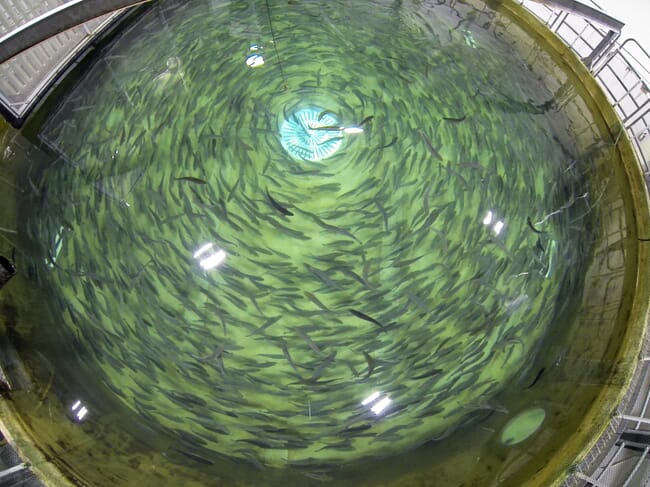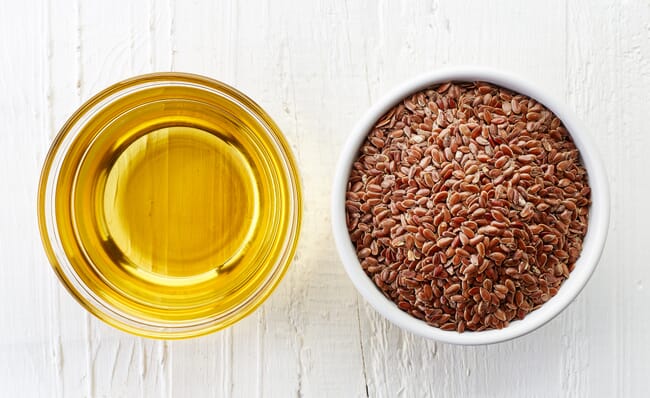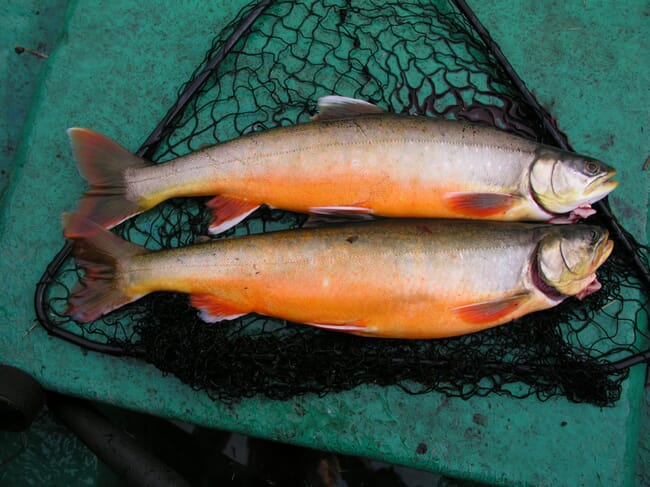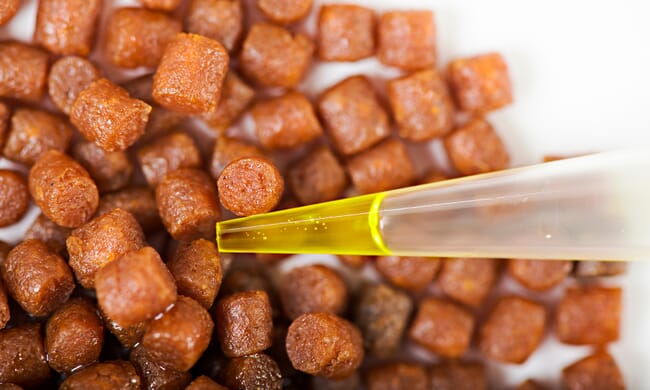
A new feed trial has demonstrated that linseed oil can replace fish oil in char diets without compromising growth performance or feed utilisation. The findings, published recently in Aquaculture reports, show that switching fish oil with linseed oil didn’t affect the muscle lipid or protein content of the char. Other performance indicators like feed conversion ratios, feed uptake and fish roundness were similar between the experimental and fish oil-fed cohorts. The findings also suggest that using linseed oil in lieu of fish oil is workable across multiple char subspecies – Arctic, brook and hybrid subtypes.
Canada’s char industries and pressure on fish oil
Despite its small production volumes, char is emerging as a strong freshwater aquaculture contender in North America and Europe. Canada’s Arctic char sector – which began producing fish in the mid-1980s – is poised to expand from its current production volume of 7,000 tonnes per year. This segment is targeting high-value markets and is hoping to stand out from other farmed salmonid offerings, namely trout and salmon. The brook char industry is primarily focused on producing fish to restock lakes and rivers for sport fishing.
Since char are carnivorous, increasing production volumes will put additional pressure on fish oil stocks. Char, like other salmonids, rely on fish oil as an essential source of energy, lipids and complex fatty acids like omega 3. Industry watchers have noted that fish oil demand is increasing but supplies from fisheries are stagnating. This imbalance will lead to a price increase and could undermine the sector’s profit margins. Escalating fish oil prices are also spurring the search for alternative and environmentally sustainable lipid sources for the industry.
Many aquaculture nutritionists are trying to identify sustainable sources of omega 3 fatty acids to use in lieu of fish oil in aquafeeds. Though vegetable oils can fulfil some of the lipid requirements for fish, they fall short in meeting the complex ARA, EPA and DHA fatty acids needs for char species. Without these key fat sources in their diets, charr often experience inflammation and other health and reproductive deficits. Lack of omega 3 fatty acids also impacts the fishes’ nutritional quality – tissue samples indicate that low omega 3 levels in aquaculture diets translates into low levels in finished fillets.
Recent nutritional efforts have turned to linseed oil – an oil derived from flax – as a potential source of omega 3 in aquafeed. Linseed oil is rich in fatty acid precursors and is widely used as human dietary supplement. Because of this wide availability and nutritional profile, researchers are exploring whether it can replace fish oil in aquafeed.

Comparing linseed oil and fish oil
In this study, researchers wanted to compare the growth performance, feed utilisation and muscular fatty acid profiles of Arctic char, brook char and their hybrids when they were raised on different diets. The first diet used linseed oil as a stand-in for fish oil and the control diet was a standard aquafeed with fish oil. The researchers also wanted to determine how the fatty acid precursors in linseed oil were metabolised by the fish – and whether they were converted into the complex ARA, EPA and DHA acids that the fish need to thrive.
The experiment was conducted on four groups of chars. The first two contained Arctic char (AC) and brook char (BC), and the final two contained hybrid Arctic char and hybrid brook char. The hybrid Arctic charr were created by crossing a female Arctic char with a male brook char (HA), while the hybrid brook char were created by crossing a female brook char with a male Arctic char (HB).
The researchers sourced 1,200 10-gram fish (300 fish per group) and stocked them into six 0.150 m3 tanks. When the experiment began, the team then split the fish into 24 tanks with three replicates for each experimental group. The control and experimental feeds were given to the different cohorts based on an agreed feeding schedule.
The researchers conducted a nutrient composition analysis on each aquafeed batch used for the experiment and monitored the fishes’ specific growth rate, food intake and feed conversion ratio for 133 days. At the end of the trial, 10 fish per tank were randomly sampled for an in-depth tissue analysis that measured lipid levels and oxidation.
What happens when producers use linseed oil instead of fish oil?
Initial results from this trial showed that it’s possible to use linseed in lieu of fish oil in charr diets. Final analysis demonstrated that swapping linseed oil for fish oil did not impact the final weight, specific growth rate, feed conversion ratio, food intake, fish roundness or growth performance in the char. This finding is largely in line with other studies on fish oil substitution conducted in trout and Atlantic salmon. It also echoes other studies where linseed oil was included in salmonid diets.
The researchers noted that the main factor that affected the charr’s growth was hybridisation. Hybrid fish on both the control and experimental diets posted lower specific growth rates and feed conversion ratios than fish in the AC and BC groups. In their analysis, they note that growth rates among these parental groups – whether they were fed the fish oil diet or linseed oil diet – had similar food intake, feed conversion ratios and specific growth rates. They also saw a similar trend within the hybrid cohorts. This suggests that substituting fish oil with linseed oil didn’t impact the growth rate of these fish.

Is a one-for-one swap feasible?
During tissue analysis, the researchers noted that some char in the linseed oil groups had lower levels of EPA and DHA fatty acids. The difference was notable – EPA levels were 35 percent lower than the control for some fish and DHA levels were reduced by as much as 30 percent.
This finding should raise concerns at the consumer end of the value chain. The perception of charr as a healthy food depends on its levels of complex fatty acids like omega 3. If these are reduced, Arctic char may not be as nutritionally competitive as other salmonid offerings in the grocery case. Though final analysis found that the fishes’ muscle nutritional value was similar to the fish oil-fed cohorts, the observed EPA and DHA reduction warrants further investigation. It might indicate that a one-for-one swap of fish oil for linseed oil is unworkable in a commercial setting.

© Nofima
Additional research should focus on char metabolism – namely the impact of fish oil substitution on liver functioning in charr subtypes. Having this type of metabolic data would allow char producers to determine which type of fish or hybrid would perform well in a farm environment. This research could also yield valuable information on fatty acid synthesis and allow aquaculture nutritionists to target optimal inclusion levels for linseed oil. This would make substituting fish oil for linseed oil more feasible and ensure that the fish do not experience any fatty acid deficits during production. It would also ensure that farmed charr can maintain its nutritional advantages for consumers.




